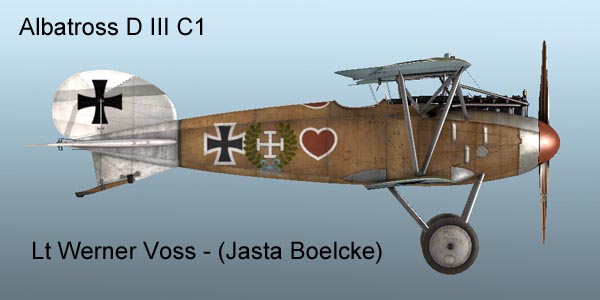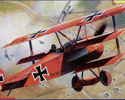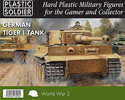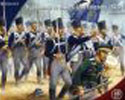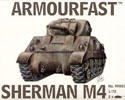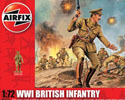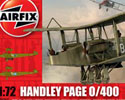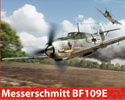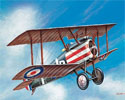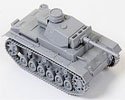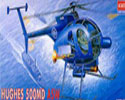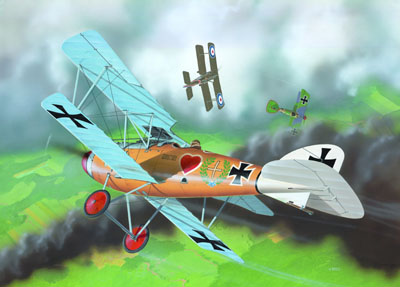The First World War - Albatros D Iii
Albatros D III
In the late Spring of 1916 the Fokker Scourge was at its end. New Allied aircraft, the D.H.2, F.E. pusher types and the Nieuport 11, were beginning to have an impact on the Fokker Eindecker and its synchronized machine gun. The German command were required to look at the situation and find a way to regain air superiority. In the summer of 1916 Albatross engineers set about designing a new streamlined fighter based around the reliable Mercedes D III six cylinder water-cooled engine rated at 160 h.p. that carried twin machine guns. The new aircraft was given the designation Albatros D (Doppledekker/Bi-plane) I.
At roughly the same time the German Flying services were re-organised to provide dedicated fighter squadrons of 12 aircraft each known as Jagdstaffel (Jasta). These squadrons were initially equipped with all sorts of different types of aircraft but by the Spring of 1917 there were 37 Jastas, all equipped with Albatros D I and D II, with the newer Albatros D III starting to enter service.
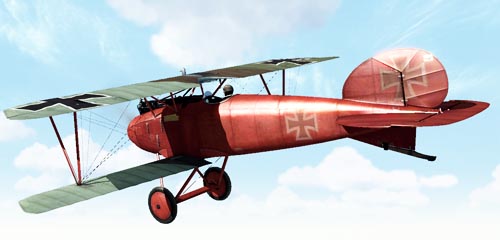
The famous Red Baron, Manfred von Richthofen, flew a red painted Albatros D III
The Albatros was a neat design having the engine enclosed in a streamlined nose and a plywood fuselage tapering off in an elongated teardrop shape towards the tail that incorporated the vertical fin. The Albatros D III, like the previous types, was a biplane configuration with the two planes being connected by two 'V' type struts, one on either side. The Albatros D III was a sesquiplane layout, inspired by the Nieuport 11, the top wing being slightly larger than the bottom wing. This allowed the pilot a good view downwards, a beneficial feature for a fighter that was expected to attack from above. The use of ailerons gave it a huge advantage over the previous Fokker Eindecker, that warped the wings to maneuver. The ailerons were operated by cables running through the lower wing.
Despite exceeding expected performance, the Albatros D III was prone to wing failure, a problem that would plague it throughout its service life. The failures seemed to be associated with the 'V' strut, which allowed the wings to twist under high local wing loading, cracking the spars. Limits were therefore introduced on the diving speed.
The first Albatros D III arrived at the front during December 1916, the first three going to Jagdstaffel 24. The aircraft were well received by the pilots. There were problems, as there are with all new types, but these were resolved. One of the most obvious rectifications was the position of the radiator. On early examples the radiator was in the center of the upper wing. This caused the feed duct to obstruct the view forward, interfering with aiming the gun, and it caused the pilot to be covered with scalding hot water if the radiator was burst. After just over 300 Albatros D III's had been delivered, the radiator was offset to the right of the centerline. The main problem however was a structural one. In January 1917, as the aircraft was being committed to battle in earnest, rib fractures and breakages were being reported as a result of turning and diving. Pilots would suddenly experience the lower wing breaking and many were lucky to escape with the lives, including the Red Baron, Manfred von Richthofen. By early February the lower wings were being replaced by stronger ones and existing wings were being re-enforced. Despite this, random instances of wing failure continued to happen. These failures tended to be associated with the production coming out of Albatros at Johannisthal. Aircraft produced at OAW and under license in Austria did not suffer the same problems with wing failure, although the Austrian D III had a completely re-designed lower wing.
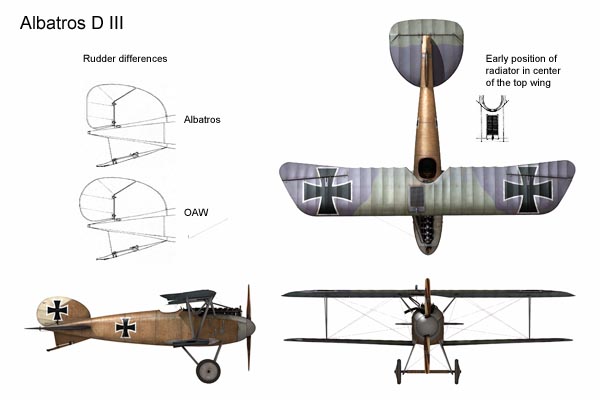
The Albatros D III most significant improvements from the Albatros D II were the lowering of the top wing, and the reduction in size of the bottom wing to improve the pilot's visibility
| Crew: | 1 |
| Length: | 7.33 m (24 ft 0 in) |
| Height: | 2.90 m (9ft 6 in) |
| Wingspan: | 9.00 m (29ft 6 in) |
| Empty Weight: | 695 kg (1,532 lb) |
| Loaded Weight: | 886 kg (1,949 lb) |
| Powerplant: | 1 x Mercedes DIIIa six cylinder inline, water-cooled engine. 127 kW (170hp) |
| Max Speed: | 170 Km/h (106 mph) at sea level |
| Range: | 480 km (300 mile) |
| Service Ceiling: | 5,500 m (18,044 ft) |
| Armament: | 2 x 7.92 mm LMG 08/15 machine guns |
By the spring of 1917 the Albatros D III was becoming established as the main type of German fighter in service over the Western Front. Despite its undoubted problems it became the reason for the serious losses to the Royal Flying Corps in what became known as 'Bloody April'.
By July 1917 the D III was the mainstay of the German Jastas.
| Albatros D I | Albatros D II | Albatros D III | ||
| 1917 | January | 39 | 214 | |
| July | 17 | 72 | 303 | |
| 1918 | January | 8 | 6 | 423 |
| July | 1 | 2 | 82 |
Around the middle of 1918 the D III began to be replaced by the newer D V a.
